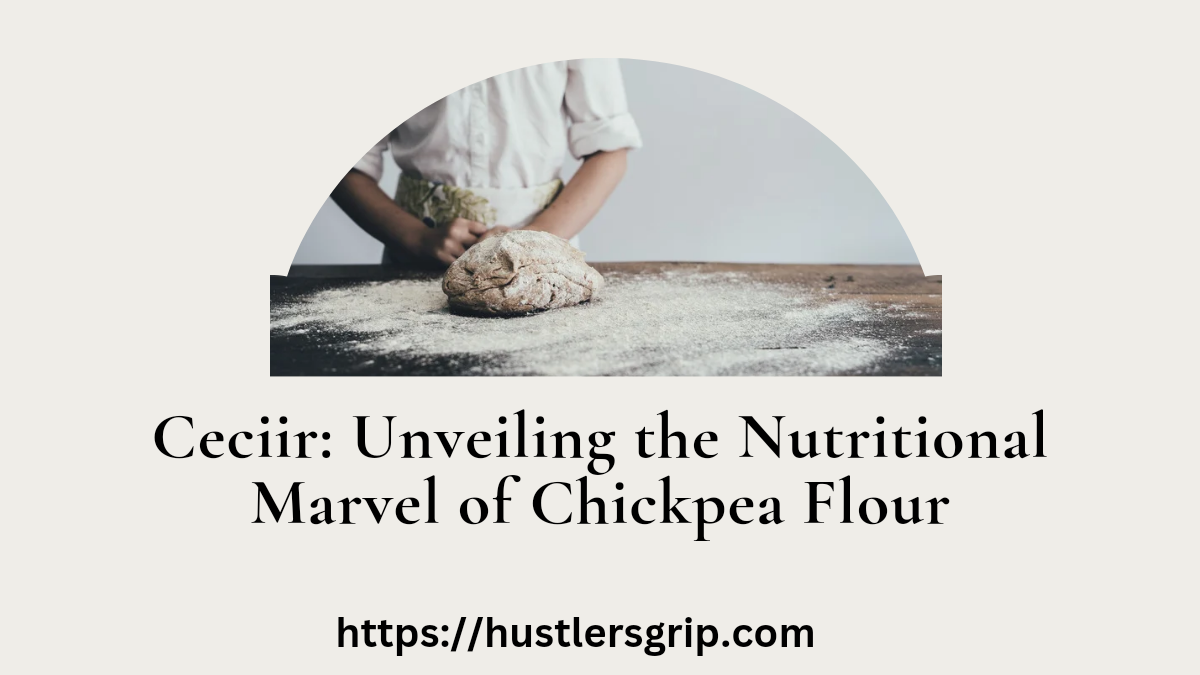A Brief Overview of Ceciir
Ceciir, which goes by other names including chickpea flour, gram flour, and besan, is an adaptable ingredient that has long been a mainstay in many different cuisines. Ceciir, made from ground chickpeas, is a powerhouse that tastes great too.
Background and Causes
Chickpeas have a long history extending back thousands of years, with evidence of its cultivation discovered in ancient civilizations such as Mesopotamia and the Mediterranean area. It is thought that chickpea flour has been used for millennia in traditional Indian, Middle Eastern, and Mediterranean cuisine, while its actual origins are unknown.
The Ceciir Dietary Profile
Macronutrients
Ceciir is a nutrient-dense ingredient, rich in protein, fiber, and complex carbs. For those looking for a plant-based protein source, chickpea flour is a great option. Just one cup of this flour has around 20 grams of protein.
Micronutrients
Chickpea flour is rich in magnesium, B vitamins, iron, zinc, and other micronutrients in addition to macronutrients. These nutrients serve critical roles in different biological activities, including energy metabolism, immunological function, and blood cell synthesis.
Benefits of Ceciir Consumption on Health
Improved Digestion
Thanks to its high fiber content, ceciir may help support good digestion and avoid constipation. Fiber functions as a prebiotic, nourishing the good bacteria in your stomach and improving overall digestive health.
Heart Health
Research has indicated that integrating chickpea flour into your diet may help decrease cholesterol levels and lessen the risk of heart disease. The soluble fiber present in chickpea flour helps eliminate excess cholesterol from the circulation, ultimately enhancing heart health.
Weight Management
Ceciir is a low-glycemic-index meal, meaning it is digested slowly and does not produce fast rises in blood sugar levels. This makes it a good alternative for anyone trying to maintain their weight or regulate blood sugar levels.
Blood Sugar Regulation
For patients with diabetes or insulin resistance, chickpea flour may assist improve blood sugar management. The complex carbs and soluble fiber in chickpea flour help moderate blood sugar levels and avoid unexpected spikes and falls.
Culinary Uses of Ceciir
From spicy to sweet, chickpea flour may be utilized in a broad range of cuisines. In Indian cuisine, it is widely used to prepare classic foods such as pakoras, bhajis, and dosas. In Mediterranean cuisine, it is used to produce savory pancakes, flatbreads, and falafel. Additionally, chickpea flour may be used as a gluten-free replacement to wheat flour in baking.
Sustainability and Environmental Impact
Chickpeas are a very sustainable crop, using relatively little water compared to other protein sources such as meat and dairy. Additionally, chickpea production may assist enhance soil health by fixing nitrogen in the soil and minimizing the demand for synthetic fertilizers.
Buying and Storing Ceciir
Ceciir may be found in most grocery shops and health food stores, generally in the baking aisle or ethnic foods department. When buying chickpea flour, search for products that utilize organic chickpeas and avoid any extra preservatives or chemicals. Once opened, keep chickpea flour in an airtight container in a cold, dry area to avoid spoiling.
Risks and Precautions
While chickpea flour is typically safe for eating, some people may have stomach pain or allergic reactions. If you have a known allergy to chickpeas or legumes, it is preferable to avoid chickpea flour entirely. Additionally, be careful when incorporating chickpea flour into your diet, since it may induce gas or bloating in some persons, particularly if ingested in excessive amounts.
Conclusion
In conclusion, ceciir, or chickpea flour, is a nutritious powerhouse that provides a broad variety of health advantages. From helping digestion to supporting heart health and weight management, chickpea flour is a versatile ingredient that can be included into a range of cuisines. Whether you’re following a gluten-free diet, wanting to enhance your protein consumption, or just want to explore new culinary possibilities, chickpea flour is a must-have pantry staple.
FAQs (Frequently Asked Questions)
1.Is chickpea flour the same as normal flour?
No, chickpea flour is manufactured from ground chickpeas, whereas ordinary flour is generally derived from wheat.
2.Can chickpea flour be used as a replacement for conventional flour in baking?
Yes, chickpea flour may be used as a gluten-free replacement to wheat flour in baking.
3.Is chickpea flour acceptable for persons with gluten sensitivity or celiac disease?
Yes, chickpea flour is naturally gluten-free and may be safely ingested by anyone with gluten sensitivity or celiac disease.
4.What are some typical recipes prepared using chickpea flour?
Some frequent recipes produced with chickpea flour include pakoras, bhajis, dosas, flatbreads, falafel, and gluten-free baked products.
5.Are there any possible adverse effects of ingesting chickpea flour?
While chickpea flour is typically safe for eating, some people may have stomach pain or allergic reactions. It’s crucial to watch your body’s reaction while adding chickpea flour into your diet.











